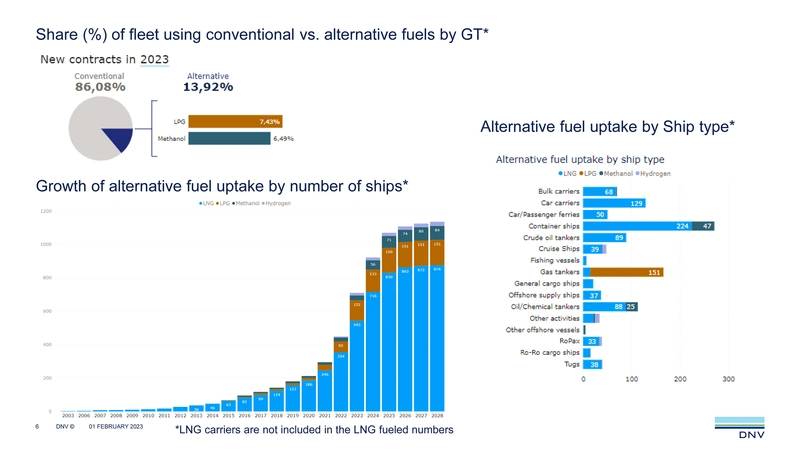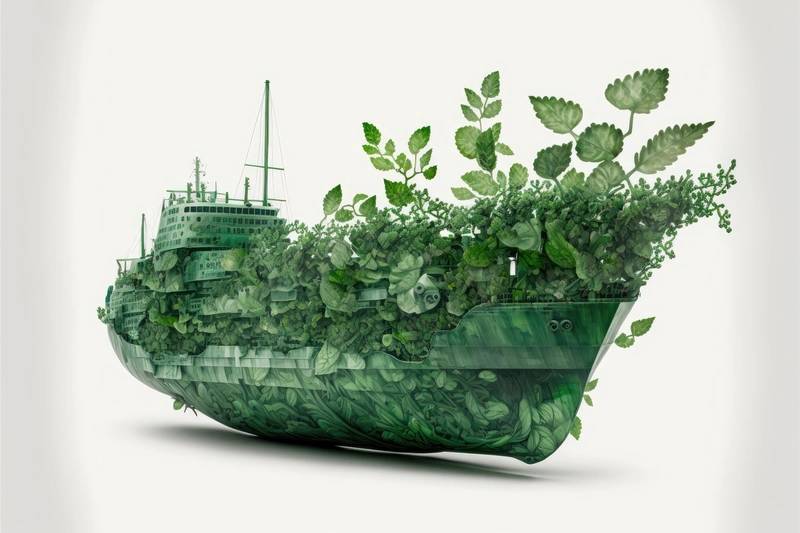Maritime Transport: Fuels, Emissions and Sustainability
International trade by sea has long been a key part of the world economy and approximately 90% of traded commodities is reliant on shipping. Once wind-propelled in the days of sail, the current generation of ships now heavily rely on fossil fuels. Fossil fuel propulsion contributes to global warming with carbon emissions approximating 940 MtCO2e per year and also has health implications for communities surrounding ports through the release of air pollutants. The environmental impact of fossil-fuelled engines is further compounded by their use in port infrastructure, docking equipment, and the impact of biofouling on fuel efficiency.
The industrial revolution brought steam-propelled ships. These out-competed sailing ships and the last wind-powered commercial ship, Pamir, made her final voyage in 1957, sinking off the Azores with 6 survivors. The primary fuel for steam ships was coal, a notoriously unclean fuel. Coal is mostly composed of carbon, and its combustion produces high levels of carbon oxides, nitrous oxides (NOx), sulphur oxides (SOx) and particulate matter.
Once crude oil extraction became viable this became the source of fuel for ships, remaining predominant to this day. The shipping industry relies on an assortment of fuels, such as Heavy Fuel Oil (HFO), Low Sulfur Fuel Oil, Marine Gas Oil, Marine Diesel Oil and Liquid Natural Gas (LNG).
These are needed for dock-side cargo handling, on-ship electricity generation and ship propulsion. Of these fuels, HFO is the primary fuel used within the shipping industry. Emissions of particulate matter from HFO combustion are small enough to pass through the alveoli of the lungs, leading to asthma, Chronic Obstructive Pulmonary Disease (COPD), heart disease, stroke, and lung cancers.
While the use of Low Sulfur Fuel Oil mitigates such emissions, it is more expensive. Compounding the emissions of particulate matter, are NOx, which are greenhouse gases (GHG) that are more potent than carbon dioxide. Furthermore, exposure to NOx has been linked to cardiovascular problems and higher rates of respiratory issues such as asthma and bronchitis.
Biofouling on hulls increases fuel consumption by up to 40%. This leads to a proportional increase in CO2e emissions and harmful pollutants. Combining effective antifouling paints with regular removal of biofouling has a major role to play in maintaining fuel efficiency regardless of the fuel used. Hull drag can also be reduced by air lubrication, where bubbles are generated by supplying air to the ship’s hull, reducing fuel usage by up to 10%.

Technologies and fuels are now being developed and introduced to facilitate the vital shipping industry to continue in a low carbon future. Sail power has been reintroduced in a modern form, wind power is being utilized in the form of wind turbines and alternative fuels including recycled vegetable oil is being introduced.
Alternative fuels include LNG, which now makes up approximately 2% of shipping fuel use. LNG produces significantly lower pollutants than fuel oils such as HFO. However, LNG is liquified methane, which has a global warming potential 28 times larger than CO2 and may only marginally reduce the ship’s carbon footprint. The manufacture of LNG ships also has a significantly higher capital cost than HFO-powered ships.
Hydrogen shows promise as a fuel of the future for shipping. Hydrogen combustion is a cleaner process than that for fossil fuels, producing only water as a by-product. While NOx production can be higher as hydrogen engines have higher combustion temperatures. These could be mitigated with exhaust gas recirculation and catalytic converters. Green hydrogen, produced without the use of fossil fuels, via electrolysis requires a large amount of electricity. This would need to be generated from renewable sources for an environmental solution and there are proposals to make hydrogen through electrolysis, powered by renewable energy in Morocco.
Methanol has been successfully trialled as a marine fuel. When combusted methanol produces water and carbon dioxide, zero SOx and much lower particulate matter or NOx compared to HFO. Most of the current world supply of methanol relies on the production syn-gas from fossil fuels in an energy-intensive process which can have a large carbon footprint. However, it can be sourced from biomass. It is still an energy intensive process, but carbon emissions could be mitigated using renewable electricity.
Ammonia has also gained much attention in recent years as a possible future fuel. Ammonia is synthesized by the catalytic reaction of nitrogen and hydrogen under high pressure and temperature. This is highly energy intensive. Currently, most ammonia is produced via steam-reforming of methane into hydrogen. Ammonia has the advantage of producing no CO2, SOx or particulate matter when combusted, however, NOx emissions can be substantial in depending on the combustion conditions. NOx emissions can be mitigated by controlling the air-to-fuel ratios and the implementation of technologies such as exhaust gas recirculation and catalytic converters.
An increasing number of regulations and targets are being implemented to reduce the GHG emissions produced by shipping. The International Maritime Organization has set stringent targets to reduce the carbon footprint of international shipping by at least 40% by 2030. The 2021 EU Green Deal sets in place targets for a 90% reduction in port city GHG emissions by 2050.
The EU has also publicly declared the need to bring shipping under its Emissions Trading System, which sets caps on the emissions of companies per annum, with financial implications for companies who breach this limit.
At ports, many ships often switch to their auxiliary steam boilers to provide power for many of the systems, electricity, sanitary systems, and air conditioning. Carbon emissions while docked can be reduced to effectively zero when using ship to shore power that uses electricity from a renewable source. The emissions reduction applies to harmful air pollutants as well as carbon dioxide.
Numerous ports across the world are now trialling low and zero-emission technologies and fuels. The World Ports Action Climate Program (WPCAP) was formed in 2018 to work actively on realizing the Paris Climate Agreement. Initiatives encompass Efficiency, Cooperation, Encouragement and Policy; Smart digital solutions optimise the approach and handling of vessels in ports, shorter turnaround times lead to fuel savings and emission reductions. Cooperation between member ports accelerate the introduction of shore-based power leading to emissions reduction and improved air quality. Encouragement to use low-carbon and carbon-free fuels to reduce emissions, terminal equipment. Cooperation between port authorities with terminal operators for the introduction of new, emission-free storage and terminal equipment, such as container cranes and Policy - Cooperation and exchange in fields such as incentive schemes to promote emission reductions in the maritime industry.
The voyage to decarbonization of the shipping sector requires a transition away from traditional fossil fuels.
Ports can reduce their emissions through the provision of ship to shore power, and the electrification of port-based activities (such as cranes and forklifts). Ship based emissions can be reduced by using cleaner fuels or renewable power sources financial objections to these might be addressed by the introduction of carbon taxes. Ports and government agencies can facilitate and incentivise improved fuel efficiency, which can be immediately implemented.
Ports can play a dual role in the decarbonisation of shipping, by reducing in-port greenhouse gas emissions, as well as facilitating the reduction of at sea GHG emissions. To reduce sea-based emissions ports can offer incentives for environmentally friendly ships. On-shore carbon reduction plans for port operations and incentivisation with access and provision to allow ships to use electricity power once docked will cut both carbon and local air pollution.
Meet the Authors:


